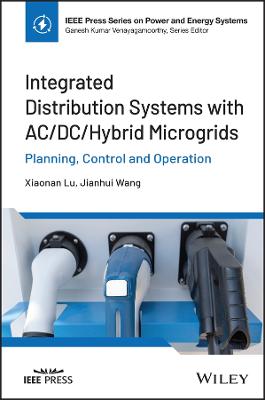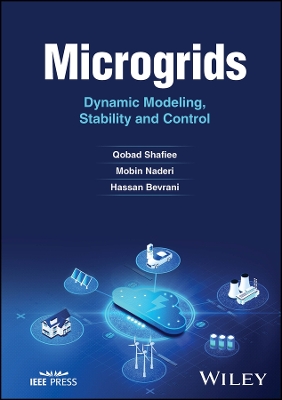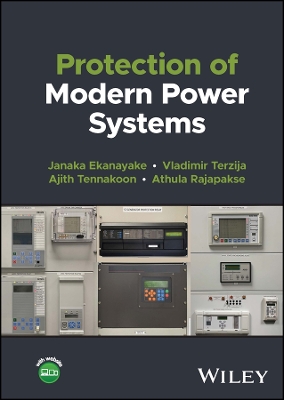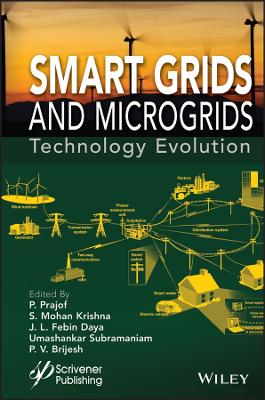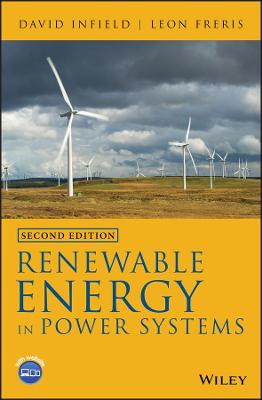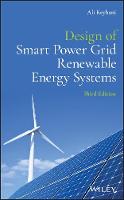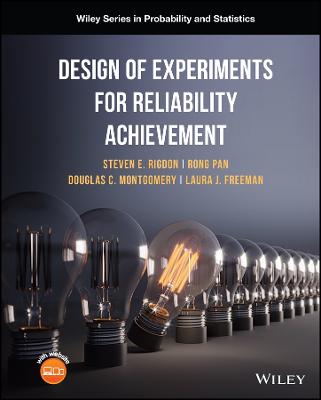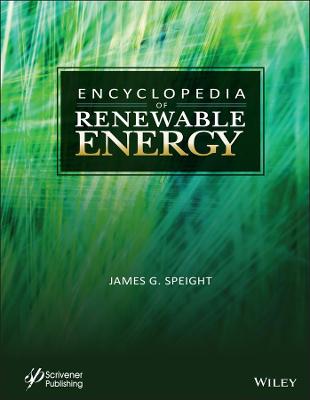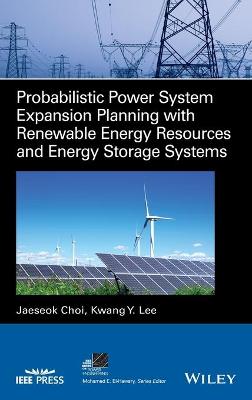Step-by-Step Design of Large-Scale Photovoltaic Power Plants
 -10%
portes grátis
-10%
portes grátis
Step-by-Step Design of Large-Scale Photovoltaic Power Plants
Karimi, Houshang; Naghaviha, Davood; Nikkhajoei, Hassan
John Wiley and Sons Inc
01/2022
224
Dura
Inglês
9781119736561
15 a 20 dias
448
ACKNOWLEDGMENTS
ACRONYMS
SYMBOLS
1 Introduction
1.1 Solar Energy 1
1.2 Diverse Solar Energy Applications 1
1.2.1 Solar Thermal Power Plant 2
1.2.2 PV Thermal Hybrid Power Plants 4
1.2.3 PV Power Plant 4
1.3 Global PV Power Plants 9
1.4 Perspective of PV Power Plants 11
1.5 A Review on the Design of Large-Scale PV Power Plant 13
1.6 Outline of the Book 14
References 15
2 Design Requirements 19
2.1 Overview 19
2.2 Development Phases 19
2.2.1 Concept Development and Site Identification 20
2.2.2 Prefeasibility Study 20
2.2.3 Feasibility Study 20
2.2.4 Permitting, Financing and Contracts 20
2.2.5 Detailed Design and Engineering 21
2.2.6 Construction 21
2.2.7 Commercial Operation 21
2.3 Project Predesign 21
2.4 Project Detailed Design 21
2.5 The Main Components Required for Realizing an LS-PVPP 22
2.5.1 PV Panels (PV Module) 22
2.5.2 Solar Inverter 22
2.5.3 Photovoltaic Mounting Systems (Solar Module Racking) 26
2.5.4 DC Cable 26
2.5.5 DC Combiner Box 26
2.5.6 DC Protection System 26
2.5.7 AC Combiner Box 26
2.5.8 Low-Voltage Switchgear 26
2.5.9 Transformers 27
2.5.10 Medium-Voltage Switchgear 27
2.5.11 LV and MV AC Cables 27
2.5.12 AC Protection Devices 27
2.6 An Overview of PV Technologies 27
2.6.1 Background on Solar Cell 27
2.6.2 Types and Classifications 28
2.7 Solar Inverter Topologies Overview 28
2.7.1 Central Inverter 28
2.7.2 String Inverter 29
2.7.3 Multi-string Inverter29
2.7.4 Micro-Inverter 29
2.8 Solar Panel Mounting 30
2.9 Solar Panel Tilt 30
2.10 Solar Tracking System 31
2.10.1 One-Axis Tracker 31
2.10.1.1 North-South Horizontal-Axis Tracking 31
2.10.1.2 Polar Tracking 31
2.10.1.3 East-West Horizontal-Axis Tracking 31
2.10.1.4 Azimuthal-Axis Tracking 32
2.10.2 Two-Axis Tracker 32
2.10.3 Driving Motor 32
2.10.4 Solar Tracker Control 33
References 34
3 Feasibility Studies 35
3.1 Introduction 35
3.2 Preliminary Feasibility Studies 35
3.3 Technical Feasibility Study 36
3.3.1 Site Selection 36
3.3.1.1 Amount of Sunlight 36
3.3.1.2 Land Area and Geometry 36
3.3.1.3 Climate Conditions 37
3.3.1.4 Site Access to Power Grid 38
3.3.1.5 Site Road Access 38
3.3.1.6 Site Topography 38
3.3.1.7 Land Geotechnics and Seismicity 40
3.3.1.8 Drainage, Seasonal Flooding 41
3.3.1.9 Land Use and Legal Permits 41
3.3.1.10 Air Pollution and Suspended Solid Particles 42
3.3.1.11 Geopolitical Risk 43
3.3.1.12 Financial Incentives 43
3.3.2 Annual Electricity Production 43
3.3.3 Equipment Technical Specifications 43
3.3.4 Execution and Construction Processes 43
3.3.5 Site Plan 43
3.4 Environmental Feasibility 44
3.5 Social Feasibility 45
3.6 Economic Feasibility 45
3.6.1 Financial Model Inputs 45
3.6.2 Financial Model Results 47
3.6.3 Financial and Economic Indicators 48
3.6.4 Financial Indicators 48
3.6.4.1 Net Present Value 48
3.6.4.2 Internal Rate of Return 48
3.6.4.3 Investment Return Period 49
3.6.4.4 Break Even Point 49
3.7 Timing Feasibility 50
3.8 Summary 50
References 51
4 Grid Connection Studies 53
4.1 Introduction 53
4.2 Introducing Topics of Grid Connection Studies 53
4.2.1 Load Flow Studies 53
4.2.2 Contingency (N-1) 54
4.2.3 Three-phase and Single-phase Short Circuit Studies 55
4.2.4 Grounding System Studies 55
4.2.5 Network Protection Studies 56
4.2.6 Power Quality Studies 57
4.2.7 Stability Studies 58
4.3 Modeling of Grid and PV Power Plants 59
4.3.1 Background Information Required for Modeling 59
4.3.2 Simulation of PV Plant and Network 60
4.3.3 Load Flow Studies Before and After PV Plant Connection 60
4.3.4 Contingency (N-1) Studies Before and After PV Plant Connection 66
4.3.5 Three-phase Short Circuit Studies 68
4.3.6 Power Quality Studies 68
4.3.7 Sustainability Studies 72
4.3.8 Investigating Additional Parameters for Grid Connection Studies 73
4.4 Summary 76
References 76
5 Solar Resource and Irradiance 79
5.1 Introduction 79
5.2 Radiometric Terms 79
5.2.1 Extraterrestrial Irradiance 79
5.2.2 Solar Geometry 80
5.2.3 Solar Radiation and Earth's Atmosphere 81
5.3 Solar Resources 82
5.3.1 Satellite Solar Data 86
5.3.2 Radiation Measurement 86
5.4 Solar Energy Radiation on Panels 86
5.5 Solar Azimuth and Altitude Angle 89
5.6 Tilt Angle and Orientation 92
5.7 Shadow Distances and Row Spacing 95
5.7.1 Sun Path 96
5.7.2 Shadow Calculations for Fixed PV Systems 96
5.7.3 Shadow Calculations for Single-Axis Tracking PV Systems) Horizontal E-W Tracking Axis) 99
References 100
6 Large-Scale PV Plant Design Overview 101
6.1 Introduction 101
6.2 Classification of LSPVPP Engineering Documents 101
6.2.1 Part 1: Feasibility Study 101
6.2.2 Part 2: Basic Design 102
6.2.3 Part 3: Detailed Design and Shop Drawing 107
6.2.4 Part 4: As-Built and Final Documentation 107
6.3 Roadmap Proposal for LSPVPP Design 108
6.3.1 Project Definition 108
6.3.2 Collecting General Information 109
6.3.3 Collecting Information By Site Visit 109
6.3.4 Limitations and Obstacles Identification 110
6.3.5 PV Module and Inverter Selection111
6.3.6 String Size Calculations 111
6.3.7 Solar PV Mounting Structure Selection 111
6.3.8 Tilt Angle Calculation 113
6.3.9 Calculations of Far and Near Shading 113
6.3.10 Optimization Process 113
6.3.11 Energy Balance and Value Engineering 115
6.3.12 Optimal Transformer Size 116
6.3.13 General SLD and Layout 116
6.3.14 Detailed Design 117
6.3.15 Electrical Parameters and Value Engineering 117
6.3.16 Preparing Final Documents 117
6.4 Conclusion 117
References 118
7 PV Power Plant DC Side Design 119
7.1 Introduction 119
7.2 DC Side Design Methodology 119
7.3 PV Modules Selection 121
7.3.1 Module Technology 121
7.3.2 PV Module Size 123
7.3.3 Selection Criteria 123
7.4 Inverter Selection 123
7.4.1 Inverter Topologies 126
7.4.1.1 Micro Inverter 126
7.4.1.2 Multi-string Inverter 126
7.4.1.3 String Inverter 126
7.4.1.4 Central Inverter 126
7.4.1.5 Virtual Central Inverter 128
7.4.2 Comparison of Inverter Topologies 128
7.5 PV Modules Number 129
7.5.1 Method 1 133
7.5.1.1 Minimum String Size 133
7.5.1.2 Maximum String Size 134
7.5.1.3 Determining Maximum Current of a PV Module 135
7.5.1.4 Determining Number of Inverters 135
7.5.2 Method 2 136
7.6 Size of PV Plant DC Side 136
7.7 DC Cables 138
7.7.1 Criteria 138
7.7.2 DC Cables Cross Section 139
7.7.2.1 Current Capacity 139
7.7.2.2 Voltage Drop 141
7.7.2.3 Power Loss 143
7.7.2.4 Short-circuit Current 143
7.8 DC Box Combiner 144
7.9 String Diode 145
7.10 Fuse 145
7.10.1 Rated Voltage 146
7.10.2 Rated Current 146
7.10.3 Fuse Testing 147
7.10.4 Melting Time 147
7.11 Surge Arrester 148
7.12 DC Switch 149
7.13 Conclusion 150
Note 150
References 150
8 PV System Losses and Energy Yield
8.1. Introduction
8.2. PV System Losses
8.2.1. Sunlight Losses
8.2.1.1. Array Incidence Losses
8.2.1.2. Soiling Losses
8.2.1.3. Dust Losses
8.2.1.4. Snow Losses
8.2.2. Sunlight into DC Electricity Conversion
8.2.2.1. Temperature-r Related Losses
8.2.2.2. Shading Losses
8.2.2.3. Low Irradiance
8.2.2.4. Module Quality
8.2.2.5. Light-Induced Degradation
8.2.2.6. Potential-Induced Degradation
8.2.2.7. Manufacturing Module Mismatch
8.2.2.8. Degradation
8.2.3. DC to AC Conversion Losses
8.2.3.1. Inverter Losses
8.2.3.2. MPPT Losses
8.2.3.3. Tracking Curtailment
8.2.3.4. PV Plant DC Losses
8.2.4. PV Plant AC Losses
8.2.4.1. AC Losses
8.2.4.2. Auxiliary Power Losses
8.2.4.3. Downtime and Unavailability
8.2.4.4. Grid Compliance Losses
8.3. Energy Yield Prediction
8.3.1. Irradiation on Modules
8.3.2. PV Plant Losses
8.3.3. Performance Modeling
8.3.4. Uncertainty in Energy Yield
8.3.5. Performance Ratio
8.3.6. Capacity Factor
8.4. Conclusion
References
ACKNOWLEDGMENTS
ACRONYMS
SYMBOLS
1 Introduction
1.1 Solar Energy 1
1.2 Diverse Solar Energy Applications 1
1.2.1 Solar Thermal Power Plant 2
1.2.2 PV Thermal Hybrid Power Plants 4
1.2.3 PV Power Plant 4
1.3 Global PV Power Plants 9
1.4 Perspective of PV Power Plants 11
1.5 A Review on the Design of Large-Scale PV Power Plant 13
1.6 Outline of the Book 14
References 15
2 Design Requirements 19
2.1 Overview 19
2.2 Development Phases 19
2.2.1 Concept Development and Site Identification 20
2.2.2 Prefeasibility Study 20
2.2.3 Feasibility Study 20
2.2.4 Permitting, Financing and Contracts 20
2.2.5 Detailed Design and Engineering 21
2.2.6 Construction 21
2.2.7 Commercial Operation 21
2.3 Project Predesign 21
2.4 Project Detailed Design 21
2.5 The Main Components Required for Realizing an LS-PVPP 22
2.5.1 PV Panels (PV Module) 22
2.5.2 Solar Inverter 22
2.5.3 Photovoltaic Mounting Systems (Solar Module Racking) 26
2.5.4 DC Cable 26
2.5.5 DC Combiner Box 26
2.5.6 DC Protection System 26
2.5.7 AC Combiner Box 26
2.5.8 Low-Voltage Switchgear 26
2.5.9 Transformers 27
2.5.10 Medium-Voltage Switchgear 27
2.5.11 LV and MV AC Cables 27
2.5.12 AC Protection Devices 27
2.6 An Overview of PV Technologies 27
2.6.1 Background on Solar Cell 27
2.6.2 Types and Classifications 28
2.7 Solar Inverter Topologies Overview 28
2.7.1 Central Inverter 28
2.7.2 String Inverter 29
2.7.3 Multi-string Inverter29
2.7.4 Micro-Inverter 29
2.8 Solar Panel Mounting 30
2.9 Solar Panel Tilt 30
2.10 Solar Tracking System 31
2.10.1 One-Axis Tracker 31
2.10.1.1 North-South Horizontal-Axis Tracking 31
2.10.1.2 Polar Tracking 31
2.10.1.3 East-West Horizontal-Axis Tracking 31
2.10.1.4 Azimuthal-Axis Tracking 32
2.10.2 Two-Axis Tracker 32
2.10.3 Driving Motor 32
2.10.4 Solar Tracker Control 33
References 34
3 Feasibility Studies 35
3.1 Introduction 35
3.2 Preliminary Feasibility Studies 35
3.3 Technical Feasibility Study 36
3.3.1 Site Selection 36
3.3.1.1 Amount of Sunlight 36
3.3.1.2 Land Area and Geometry 36
3.3.1.3 Climate Conditions 37
3.3.1.4 Site Access to Power Grid 38
3.3.1.5 Site Road Access 38
3.3.1.6 Site Topography 38
3.3.1.7 Land Geotechnics and Seismicity 40
3.3.1.8 Drainage, Seasonal Flooding 41
3.3.1.9 Land Use and Legal Permits 41
3.3.1.10 Air Pollution and Suspended Solid Particles 42
3.3.1.11 Geopolitical Risk 43
3.3.1.12 Financial Incentives 43
3.3.2 Annual Electricity Production 43
3.3.3 Equipment Technical Specifications 43
3.3.4 Execution and Construction Processes 43
3.3.5 Site Plan 43
3.4 Environmental Feasibility 44
3.5 Social Feasibility 45
3.6 Economic Feasibility 45
3.6.1 Financial Model Inputs 45
3.6.2 Financial Model Results 47
3.6.3 Financial and Economic Indicators 48
3.6.4 Financial Indicators 48
3.6.4.1 Net Present Value 48
3.6.4.2 Internal Rate of Return 48
3.6.4.3 Investment Return Period 49
3.6.4.4 Break Even Point 49
3.7 Timing Feasibility 50
3.8 Summary 50
References 51
4 Grid Connection Studies 53
4.1 Introduction 53
4.2 Introducing Topics of Grid Connection Studies 53
4.2.1 Load Flow Studies 53
4.2.2 Contingency (N-1) 54
4.2.3 Three-phase and Single-phase Short Circuit Studies 55
4.2.4 Grounding System Studies 55
4.2.5 Network Protection Studies 56
4.2.6 Power Quality Studies 57
4.2.7 Stability Studies 58
4.3 Modeling of Grid and PV Power Plants 59
4.3.1 Background Information Required for Modeling 59
4.3.2 Simulation of PV Plant and Network 60
4.3.3 Load Flow Studies Before and After PV Plant Connection 60
4.3.4 Contingency (N-1) Studies Before and After PV Plant Connection 66
4.3.5 Three-phase Short Circuit Studies 68
4.3.6 Power Quality Studies 68
4.3.7 Sustainability Studies 72
4.3.8 Investigating Additional Parameters for Grid Connection Studies 73
4.4 Summary 76
References 76
5 Solar Resource and Irradiance 79
5.1 Introduction 79
5.2 Radiometric Terms 79
5.2.1 Extraterrestrial Irradiance 79
5.2.2 Solar Geometry 80
5.2.3 Solar Radiation and Earth's Atmosphere 81
5.3 Solar Resources 82
5.3.1 Satellite Solar Data 86
5.3.2 Radiation Measurement 86
5.4 Solar Energy Radiation on Panels 86
5.5 Solar Azimuth and Altitude Angle 89
5.6 Tilt Angle and Orientation 92
5.7 Shadow Distances and Row Spacing 95
5.7.1 Sun Path 96
5.7.2 Shadow Calculations for Fixed PV Systems 96
5.7.3 Shadow Calculations for Single-Axis Tracking PV Systems) Horizontal E-W Tracking Axis) 99
References 100
6 Large-Scale PV Plant Design Overview 101
6.1 Introduction 101
6.2 Classification of LSPVPP Engineering Documents 101
6.2.1 Part 1: Feasibility Study 101
6.2.2 Part 2: Basic Design 102
6.2.3 Part 3: Detailed Design and Shop Drawing 107
6.2.4 Part 4: As-Built and Final Documentation 107
6.3 Roadmap Proposal for LSPVPP Design 108
6.3.1 Project Definition 108
6.3.2 Collecting General Information 109
6.3.3 Collecting Information By Site Visit 109
6.3.4 Limitations and Obstacles Identification 110
6.3.5 PV Module and Inverter Selection111
6.3.6 String Size Calculations 111
6.3.7 Solar PV Mounting Structure Selection 111
6.3.8 Tilt Angle Calculation 113
6.3.9 Calculations of Far and Near Shading 113
6.3.10 Optimization Process 113
6.3.11 Energy Balance and Value Engineering 115
6.3.12 Optimal Transformer Size 116
6.3.13 General SLD and Layout 116
6.3.14 Detailed Design 117
6.3.15 Electrical Parameters and Value Engineering 117
6.3.16 Preparing Final Documents 117
6.4 Conclusion 117
References 118
7 PV Power Plant DC Side Design 119
7.1 Introduction 119
7.2 DC Side Design Methodology 119
7.3 PV Modules Selection 121
7.3.1 Module Technology 121
7.3.2 PV Module Size 123
7.3.3 Selection Criteria 123
7.4 Inverter Selection 123
7.4.1 Inverter Topologies 126
7.4.1.1 Micro Inverter 126
7.4.1.2 Multi-string Inverter 126
7.4.1.3 String Inverter 126
7.4.1.4 Central Inverter 126
7.4.1.5 Virtual Central Inverter 128
7.4.2 Comparison of Inverter Topologies 128
7.5 PV Modules Number 129
7.5.1 Method 1 133
7.5.1.1 Minimum String Size 133
7.5.1.2 Maximum String Size 134
7.5.1.3 Determining Maximum Current of a PV Module 135
7.5.1.4 Determining Number of Inverters 135
7.5.2 Method 2 136
7.6 Size of PV Plant DC Side 136
7.7 DC Cables 138
7.7.1 Criteria 138
7.7.2 DC Cables Cross Section 139
7.7.2.1 Current Capacity 139
7.7.2.2 Voltage Drop 141
7.7.2.3 Power Loss 143
7.7.2.4 Short-circuit Current 143
7.8 DC Box Combiner 144
7.9 String Diode 145
7.10 Fuse 145
7.10.1 Rated Voltage 146
7.10.2 Rated Current 146
7.10.3 Fuse Testing 147
7.10.4 Melting Time 147
7.11 Surge Arrester 148
7.12 DC Switch 149
7.13 Conclusion 150
Note 150
References 150
8 PV System Losses and Energy Yield
8.1. Introduction
8.2. PV System Losses
8.2.1. Sunlight Losses
8.2.1.1. Array Incidence Losses
8.2.1.2. Soiling Losses
8.2.1.3. Dust Losses
8.2.1.4. Snow Losses
8.2.2. Sunlight into DC Electricity Conversion
8.2.2.1. Temperature-r Related Losses
8.2.2.2. Shading Losses
8.2.2.3. Low Irradiance
8.2.2.4. Module Quality
8.2.2.5. Light-Induced Degradation
8.2.2.6. Potential-Induced Degradation
8.2.2.7. Manufacturing Module Mismatch
8.2.2.8. Degradation
8.2.3. DC to AC Conversion Losses
8.2.3.1. Inverter Losses
8.2.3.2. MPPT Losses
8.2.3.3. Tracking Curtailment
8.2.3.4. PV Plant DC Losses
8.2.4. PV Plant AC Losses
8.2.4.1. AC Losses
8.2.4.2. Auxiliary Power Losses
8.2.4.3. Downtime and Unavailability
8.2.4.4. Grid Compliance Losses
8.3. Energy Yield Prediction
8.3.1. Irradiation on Modules
8.3.2. PV Plant Losses
8.3.3. Performance Modeling
8.3.4. Uncertainty in Energy Yield
8.3.5. Performance Ratio
8.3.6. Capacity Factor
8.4. Conclusion
References

